Millions of engines. Is this reality, or echoes of the constant struggle between European, Japanese and American cars? Many automotive experts never tire of arguing about this. There is more that new, more improved models of units are constantly appearing on the market, and in practice they simply did not have time to show their real resource.
Nevertheless, there is a strong belief among the people that it is on Toyota cars that some of the most reliable engines in the world are installed. In particular, we are talking about Toyota models Avensis, which has become one of the most popular in the world today.
It is easy to guess that the reason is not only in the current design, spacious salon and excellent driving characteristics. Engines of all three generations of Toyota Avensis are considered unique in their kind, which is why many connoisseurs good units would prefer to buy a used Toyota Avensis instead of a new car from another manufacturer.
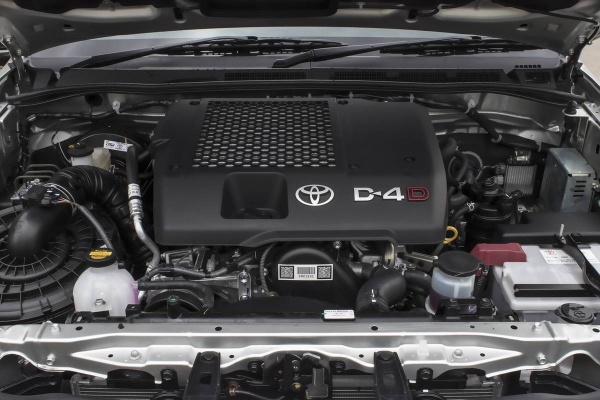
Pros of Toyota Avensis engines
There are a couple of reasons for the best Toyota engines to gain worldwide popularity:
- Well-organized engine compartment compared to other equally popular car brands. As a result, engine repair does not require disassembling a large number of components and removing many attachments just to make diagnostics or perform scheduled maintenance... It becomes cheaper as a result.
- Toyota Avensis engines are worthy of respect due to the fact that their development has always been well funded, because the engines really have excellent performance even in comparison with the units of more expensive cars.
- All indicators of reliability and durability are observed. These are: slow wear of friction parts, reliability of all units of the unit, excellent maintainability.

Review of the best Toyota Avensis engines
At one time, the Toyota Avensis model replaced the Carina E and Corona, which were popular at that time. The car under the new name was more relevant and modern. This large sedan was first seen in 19997. He had a completely European appearance and was distinguished by excellent quality characteristics. The model became scandalous because in some European countries they refused to sell it. It was precisely in the competitiveness in comparison with more native brands. But in general, the car was distinguished by the following characteristics:
- excellent build quality;
- modern, fresh design;
- high level of comfort and safety;
- excellent quality of the unit.
First generation
Buyers of the first generation of Toyota Avensis had the opportunity to choose from three gasoline units with a volume of 1.6, 1.8 and 2.0 liters. And also a version of a 2.0-liter turbodiesel was presented. Accordingly, the 1.6-liter engine produces 1-9 horses, the 1.8-liter - also 109 liters. s, and the 2.0-liter unit - 126 Horse power... We can agree that at that time the indicators were more than impressive. In turn, the turbodiesel produces 89 liters. with.
In 2001, the exclusive Avensis Verso model was introduced to the market. This big car was recognized as the best among Toyota Avensis models in Australia. Today, its platform is considered more advanced than the second generation.
Important! All units of the first generation of Toyota Avensis had excellent build quality, they used Newest technologies, such as the variable valve timing system.

Second generation
The restyled version of Toyota Avensis, produced from 2003 to 2008, had the following engine options:
- 1.6 l at 109 HP;
- 1.8 l outstanding 127 HP;
- two-liter turbodiesel with 125 horses;
- later a 2.4-liter four-cylinder unit with 124 horsepower was added.
Important! The car's developers have been able to create a best-in-class suspension and a unique safety system. Japanese crash tests presented the model with all possible prestigious stars.
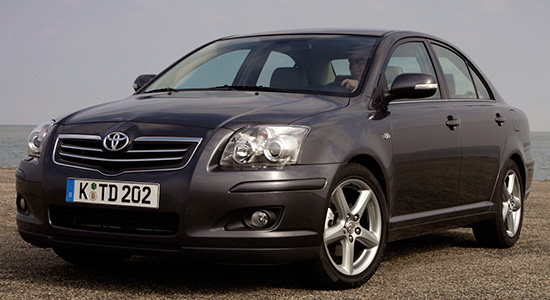
Third generation
At the 2008 Paris Motor Show, the third generation of the Toyota Avensis was presented. The release of the car continues to this day. Its engines are available in six versions. Three petrol and the same diesel.
Progress and development in the automotive industry is taking place at a rapid pace. The development of units is proceeding in a similar way. Rating of the best modern engines, characteristics and vehicles on which they are installed.
The content of the article:
Talking about which engine is the best, gasoline or diesel, as well as about the manufacturer - Japanese, German or American - opinions are unequivocally divided. Some drivers prefer a powerful and reliable unit, others - an engine designed for speed, and still others - so that it is durable and does not let down. The main difference between the engines is the class of the car on which it will be installed. As a result, the volume of the unit, characteristics and power will change.
Experienced car owners will say that the main thing in a car is for the engine to work normally. Usually, the first signs of engine wear appear after 100-150 thousand kilometers. It is good if the owner of the car is alone and looks after the engine, but if from the beginning of the purchase there were several owners and did not look after the car's engine, then repairs will be necessary much earlier, and the cost may be much higher.
Before buying a car, buyers are often concerned with the same question, which engine is better to choose. Engineers have thought through some engine models to the smallest detail, and despite the inexpensive cost of the car, there will be no problems with the engine. In another case, having bought an expensive premium car, the engine does not leave even 50 thousand km, as the first problems and breakdowns begin to appear.
Best car engine
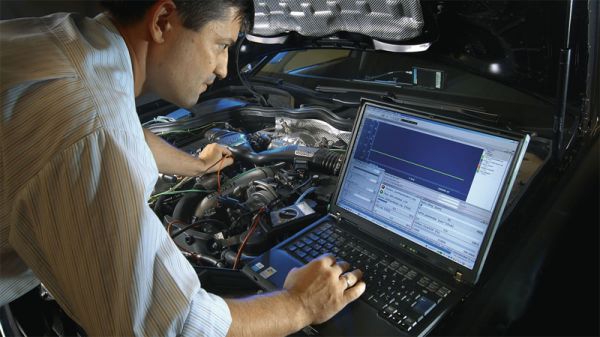
Nowadays, engineers develop an engine how quickly that sometimes they do not think about quality, in order to announce a new model of the unit. Suffice it to recall the subcompact versions with turbocharging, in which the first breakdowns appear even up to 40 thousand. But nevertheless, despite the rapid progress, there are legends in the updated version - these are the so-called "millionaires", which declared themselves from the best side.
Modern cars among specialists are considered disposable, since repairing the engine and individual components can be as easy as the whole car from the passenger compartment. The average service life of such cars is from 3 to 5 years, but much will depend on the nature of the vehicle's operation. There are options, one and the same machine, with the same operating conditions, but different engines, can travel a different distance. This is due to the presence different engines, their build quality and design.
Rating of the best modern engines
Diesel millionaire OM602 from Mercedes-Benz
![]()
Diesel engines from Mercedes-Benz are quite popular and have gained a good reputation among competitors. Famous diesel engine developed Mercedes engine-Benz back in 1985, but during its existence it has gone through more than one modification, which has made it possible to survive to this day. Not as powerful as the competition, but economical and tough. The power of the unit ranges from 90 to 130 hp, depending on the modification, on modern cars it is marked as OM612 and OM647.
The mileage of many such specimens starts from 500 thousand kilometers, although there are also some rare specimens, the record of which is a couple of million kilometers. This engine can be found on Mercedes-Benz W201, W124 and transitional W210. Also found on the G-Class SUV, Sprinter and T1 minibuses. Experienced drivers say that if they take care of the replacement of necessary parts in time and go through fuel system, then the engine is almost unkillable, which adds a lot of stars to its rating.
Bavarian BMW M57

The Bavarian manufacturer BMW decided to keep up with Mercedes-Benz and developed an equally worthy M57 diesel engine. The inline 6-cylinder unit has won the trust of many car owners of this company. In addition to the previously said reliability, the unit stands out with power and agility, which is not often found on diesel engines. First diesel unit The M57 was installed on the BMW 330D E46, at the same time the shorty was immediately transferred from the class of slow cars to the class of sports and charged ones, despite the diesel under the hood. The power of the unit, depending on the modification, ranges from 201 to 286 horses. In addition to BMW cars of all possible series, this engine is also found on Range Rover vehicles. Suffice it to recall the ethnographic expedition of Artyom Lebedev and his famous "mumusik". It was under its hood that the M57 from BMW was installed. The manufacturer's declared mileage is about 350-500 thousand kilometers.
Toyota's 3F-SE petrol engine
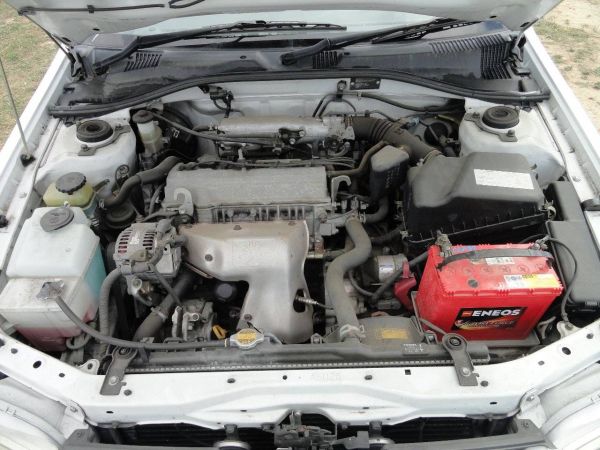
Despite the huge mileage of diesel engines, most drivers prefer to buy a car with a gasoline engine. The gasoline unit does not freeze in the cold season, and the engine itself is much simpler.
For a long time you can argue which Gas engine better and which is worse, because each has its own pros and cons. Toyota's 3F-SE opens the list of 4-cylinder petrol units. The volume of the unit is 2 liters and is designed for 16 valves, the timing belt is driven by a belt and a fairly simple distributed fuel injection. Average power, depending on the modification, is 128-140 horses. More advanced versions of the unit are equipped with turbines (3S-GTE). This modified unit can be found both on modern Toyota cars and older ones: Toyota Celica, Camry, Toyota Carina, Avensis, RAV4 and others.
A huge plus of this engine is the ability to freely transfer heavy loads, convenient arrangement of units for maintenance, easy repair and thoughtfulness of individual parts. Provided good maintenance and without overhaul, such a unit can safely move 500 thousand kilometers with a good margin for later. Also, the engine does not go over the fuel, which does not bring additional worries to the owner.
Japanese unit 4G63 from Mitsubishi
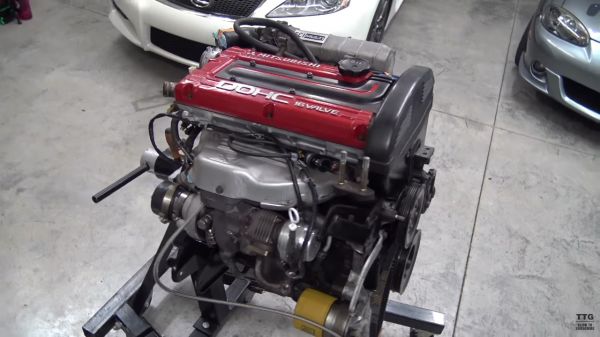
Mitsubishi does not give up its position in the structure of mid-range engines. One of the most famous, surviving 4G63 and its modifications. For the first time, the engine was presented in 1982, despite the prescription, a modified version is still installed today. Some come with three-valve SOHC camshafts, another DOHC version with two camshafts has gained more popularity. As an example, a modified 4G63 unit is installed on Mitsubishi lancer Evolution, various Hyundai and Kia models. It is also found on Chinese Brilliance cars.
Over the years, the 4G64 unit has undergone more than one modification, in some versions a turbine has been added, in others the timing adjustment has been changed. Such changes are not always beneficial, but as the owners note, the maintainability of the unit remains the same, especially in the case of an oil change. The million-plus units include the Mitsubishi 4G63 units without turbocharging, although with careful operation, the turbocharged versions also reach a record distance.
D-series from Honda

The first five leaders are closed by the Japanese engine D15 and D16 from Honda. Better known as the D-series. This series includes more than ten modifications of these units, with a volume of 1.2 liters to 1.7 liters. and really deserve the status of unkillable units. Engine power from this series reaches 131 hp, but the tachometer needle will show about 7 thousand revolutions.
The platform for the installation of such units was Honda cars Stream, Civic, Accord, HR-V and American Acura Integra. Before overhaul such engines can move about 350-500 thousand kilometers, and due to a well-thought-out design and the right hands, you can give the engine a second life even after terrible operating conditions.
European x20se from Opel
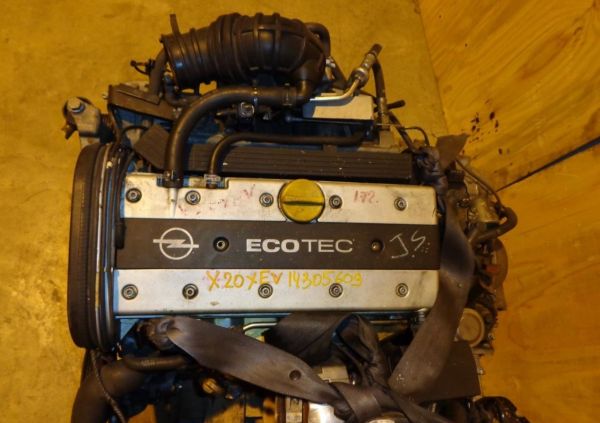
Another representative from Europe is the x20se engine of the 20ne family from Opel. The most important advantage of this unit is its endurance. Repeatedly there were statements from the owners when the unit went through the body of the car. A fairly simple design, 8 valves, a belt on the camshaft drive and a fairly simple fuel injection system. The volume of such a unit is 2 liters, depending on the modification, the engine power ranges from 114 hp. up to 130 horses.
During the production period, the unit was installed on Vectra, Astra, Omega, Frontera and Calibra, as well as on Holden, Oldsmobile and Buick cars. On the territory of Brazil, at one time they produced the same Lt3 engine, but with a turbocharger, with a capacity of 165 horses. One of these variants of the C20XE engine was installed on racing Lada and Chevrolet and as a result the cars were marked in the rally. The simplest versions of the 20ne family units can not only cover 500 thousand km without overhaul, but also with careful treatment can overcome the bar of 1 million kilometers.
Famous V-shaped eights
![]()
The engines of this group, although not very famous for their reliability, do not bring worries with minor or major breakdowns. V8 units capable of easily overstepping the 500 thousand kilometers mark can be easily enumerated on the fingers. The Bavarians are back in the cell thanks to their M60 V8, a huge plus: double-row chain, nikasil cylinder coating, as well as an excellent safety margin of the engine.
Thanks to the nickel-silicon coating of the cylinders (more often found as Nikasil), it makes them virtually indestructible. As practice shows, up to the mark of half a million kilometers, the unit should not be disassembled, and replacement will not be needed. piston rings... Fuel is considered a minus, it is necessary to carefully monitor the quality of gasoline, since the nickel coating is afraid of sulfur in the fuel. In the USA, because of such a problem, they switched to a softer protection technology - Alusil. Modernized modern version considered M62. Installed on BMW 5th and 7th series.
Six cylinders in a row

There are a lot of millionaires among such engines, simple design and balance - this is what leads to reliability and durability. Two engines 1JZ-GE with a volume of 2.5 liters and 2JZ-GE with a volume of 3 liters from Toyota are considered the best in this class. These units are available in simple and turbocharged versions.
Most often, such engines are found on right-hand drive Toyota vehicles Mark II, Supra and Crown. Among American cars these are Lexus IS300 and GS300. Thanks to their uncomplicated design, such engines can easily overcome the million kilometers mark before major repairs are required.
Bavarian BMW M30
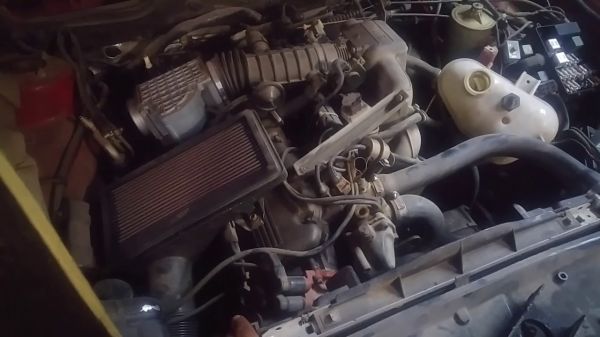
Bavarian history BMW engine The M30 has been around since 1968. During the period of the unit's existence, many modifications were released, but despite different situations, the engine is still proven to be one of the most reliable. The working volume ranges from 2.5 liters to 3.4 liters, with a capacity of 150-220 horses. The highlight of the unit's design is a cast iron block (in some modifications it can be from a special aluminum alloy), a timing chain, 12 valves (the M88 modification goes for 24 valves) and an aluminum cylinder head.
Modification М102В34 is a turbocharged М30 with a capacity of 252 horses. This engine v different modifications installed on the 5th, 6th and 7th BMW series... There is no data yet on what the mileage record of this engine was, but the mark of 500 thousand kilometers is an ordinary barrier. As many people point out, this engine often outlives the car itself as a whole.
Another Bavarian - BMW M50
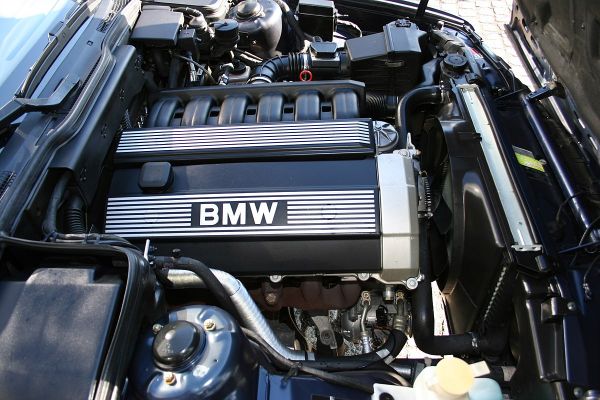
The last place in the ranking of the best engines is occupied by the Bavarian BMW M50. The working volume is from 2 to 2.5 liters, the engine power is from 150 to 192 horses. The advantage of such a unit is the modified VANOS system, which contributes to better work... In general, it does not differ much from the previous options, therefore, it overcomes the mark of half a million kilometers without major repairs.
The presented rating of the best engines is not complicated enough. Yet ask which car engine is the best. Drivers can say that some units were not included in the list, but the rating was formed on the basis of durability and resource. Hybrid and electric motors are not included for cost reasons, and the maintenance of such units is special. Individual copies simply cannot be repaired at home, which is why they say that modern cars mostly disposable.
Video review of the TOP 5 worst engines:
Back in the last century, it was believed that the larger the engine volume, the better, better, more reliable, more powerful it is. Time goes by, everything changes. Nowadays, the volume of the engine has faded into the background. The technologies that are used in our time (turbines, compressors, mechanical blowers) made it possible to remove unprecedented power from minimal volumes, this is confirmed by the rotary motor, which is installed on the RX8, but more on that later. Japan 2008 was recognized as the largest car manufacturer in the world. According to Warranty Direct in 2014, three manufacturers from Japan entered the top five most reliable engines at once, which is not strange if you have such a long tradition and experience in the production of internal combustion engines.
5 legends of engineering
1) 2JZ-GTE
One of the most popular Japanese motors produced from 1991 to 2002 (pictured above). This motor has been specially designed for Toyota Supra RZ as opposed to Nisan's internal combustion engine. This inline-six has a 3.0-liter twin turbocharger and 451 Nm of torque. They are famous for their great resource and safety factor. The engine block is made of cast iron, the head of the block is made of aluminum, so in stock it can withstand a side load of up to 1000 hp. without internal interference. It can rightfully be called the most popular and affordable Japanese tuning engine (especially among drifters).
2) RB26DET
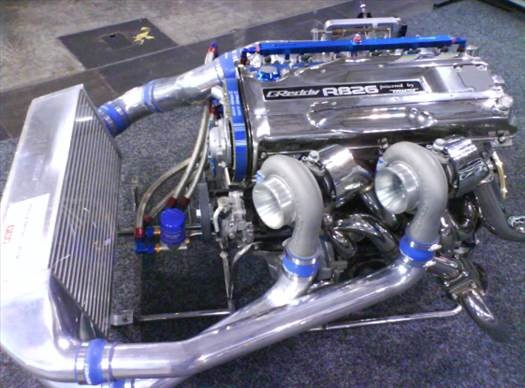
6-cylinder, in-line 2.6 liter engine manufactured by Nissan. Produced from 1985 to 2004. It was intended for installation on the Nissan Skyline GT-R. In stock, the power reached 330-350 hp. and 392 N / m of torque, although only 280 hp were declared in those characteristics)) - this was due to the agreement of the manufacturers, who agreed not to exceed this power threshold. This engine is widely recognized for its performance and extremely high tuning potential as it has two turbochargers. Can withstand 600 hp. without modifying the internals of the internal combustion engine.
3) 13B-REW
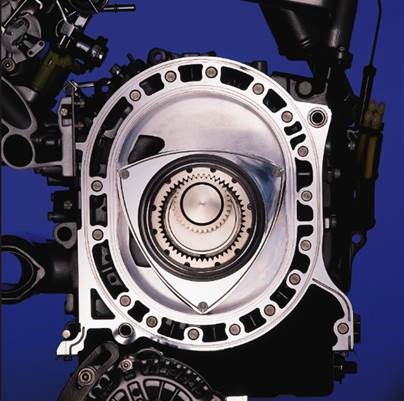
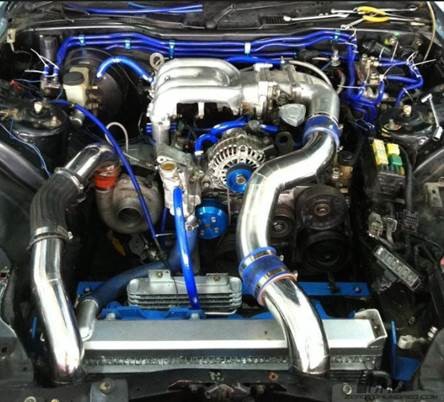
It can be considered a truly innovative solution in mechanical engineering. This engine is serially produced only on the Mazda RX-8, it was previously installed on the previous model RX-7. Japanese engineers managed to remove 190 hp from 1 liter of working volume. power. The maximum volume of the internal combustion engine was only 1.3 liters and was equipped with two turbines standing one after the other. The first turbine starts to operate at low speeds (from about 1800 rpm) so that a "turbo lag" does not appear on them. The second turbine starts up at 4000 rpm. which made it possible at any time to obtain the maximum torque that the motor can produce. One of the main advantages of this motor is a low center of gravity and an even distribution of weight along the axles of the vehicle. It has a lot of potential for improvement, but at the same time it is considered very moody and partially unreliable.
4) SR20DET
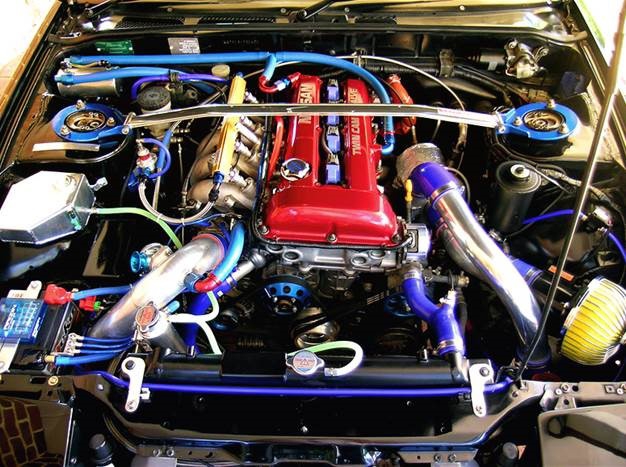
The SR20DET engine was produced from 1991 to 2002 and had several different variants in different years of production and for different models Nissan. A 2.0-liter inline four-cylinder engine with an installed turbocharger produces a modest 245 hp, but at the same time it "turns" to maximum power and torque at an unprecedented speed.
Favorite motor of novice Japanese and European drifters)) Low level compression ratio "8.5" in the cylinders made it possible to easily increase the boost of the turbo supercharger to 1 bar without much intervention in the internal combustion engine itself, which made it possible to use a budget engine with excellent technical characteristics for all sorts of tasks. The most successful car with this engine can rightfully be considered the Nissan Silvia S15.
5) 4G63T vs EJ20
Two eternal competitors in the world rally championship, especially in the early 2000s. The competition between Mitsubishi and Subaru allowed them to bring their engines to perfection.
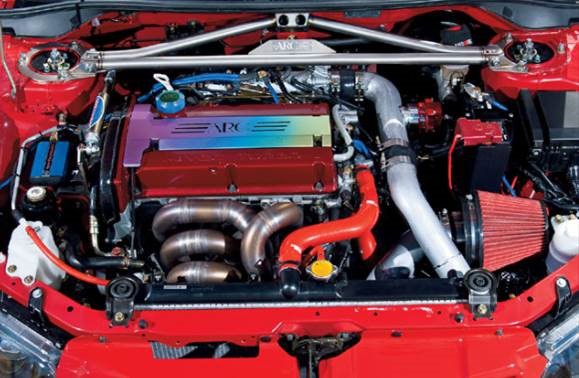
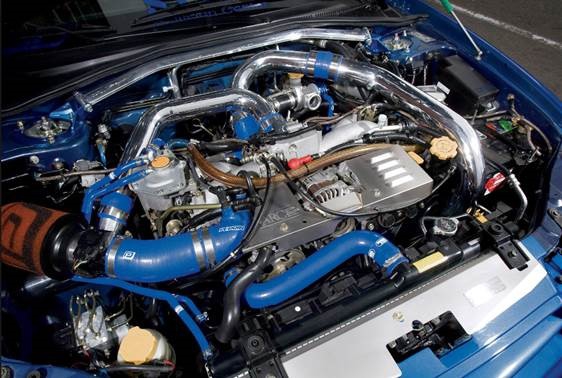
The legendary motors of this series were installed on the Mitsubishi Lancer Evolution from the first to the ninth generation. From the factory, it had a 2.0 capacity of 343 hp. (with a boost of 0.8 bar) and 382 N / m of torque with a turbocharger and DOHC valve timing. These motors ideally combine technology and simplicity of design. Nowadays, Evolution cars with this engine are an icon in rally racing as they have been tested in harsh conditions. Have brought many awards from Mitsubishi for many decades in this motor sport.
Four-stroke, four-cylinder boxer engine with a horizontal arrangement of cylinders due to its design and a low center of gravity made it possible to give cars in which the clarity and responsiveness in management were directly set. The volume of this ICE is 2.0 liters and has 225 hp. In the circles of motorists it was called "Hedgehog", has established itself as a productive and reliable engine, and its tuning potential is even higher than that of the 2.5-liter EJ25, primarily due to the thicker cylinder walls. It is also worth adding that all engines for the "hottest" versions of Subaru are named with the abbreviation WRX STI and were equipped with forged pistons. It is not prejudiced that in rally championships cars with a "hedgehog" won even more awards and prizes than 4G63T.
In the world of motorists, there are legends about unbreakable engines. Many even claim that they can confirm the reliability of this or that motor with a range of half a million to a million kilometers, even though they have been watching it for only a few years. In fact, there are engines of a million, we have compiled a list of cars for you. Auto repair shops with extensive experience helped to compile this list. And since the world auto industry has done its best in recent decades, there are a lot of such cars.
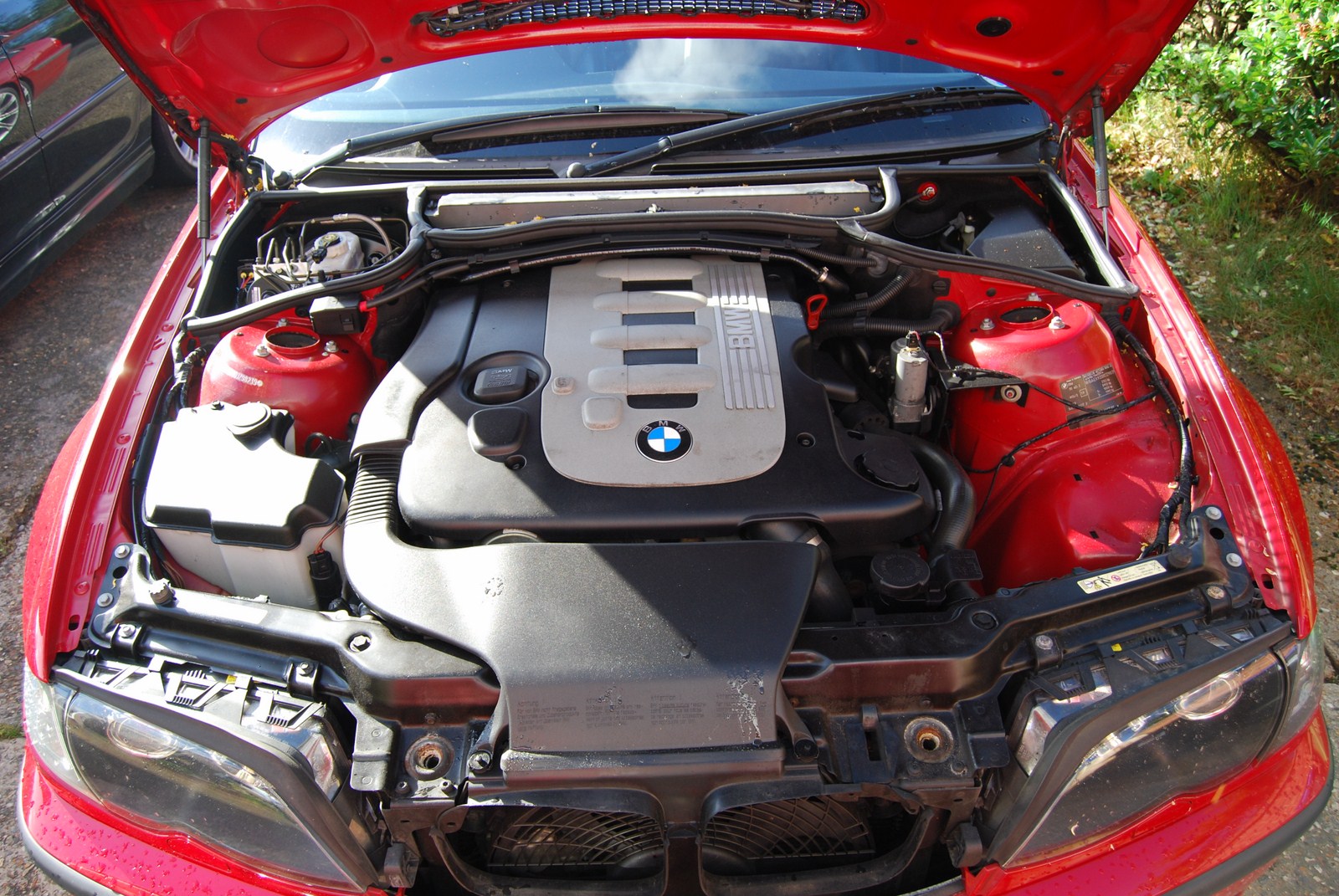
Engine - millionaire from BMW
The reliability of the engine is determined by the following indicators:
- durability is determined by the rate of wear of motor parts;
- reliability, that is, the frequency of any failures that led to the termination of operation;
- persistence, that is, resistance to the effects of various external factors at moments of inactivity;
- maintainability - can it be repaired.
This list begs a lot of questions. Is 1 million km a mileage after which the engine parts are completely worn out? Or should there be no refusals during this time? Or maybe it is so maintainable, then a car with it will cover 1 million kilometers without problems?
In this case, we must also talk about the limiting state. It is determined by the impossibility of further operation for technical, economic reasons or the creation of unsafe situations for the environment. This approach suggests that the engine can travel 1 million km with adequate maintenance.
A million-plus engine is a machine endowed with huge reserves of strength.
Speaking of millionaires, they often recall cars produced in the 80s and 90s, because they are still actively used. Their safety margin is so great that they pass the first 500 thousand km without overhaul. Modern models are produced in harsh environmental and marketing conditions. Motors of a smaller volume are produced, which leads to forcing and the use of turbo-charging. And this shortens the life of the motor several times.
The best engines of a million: what are they?
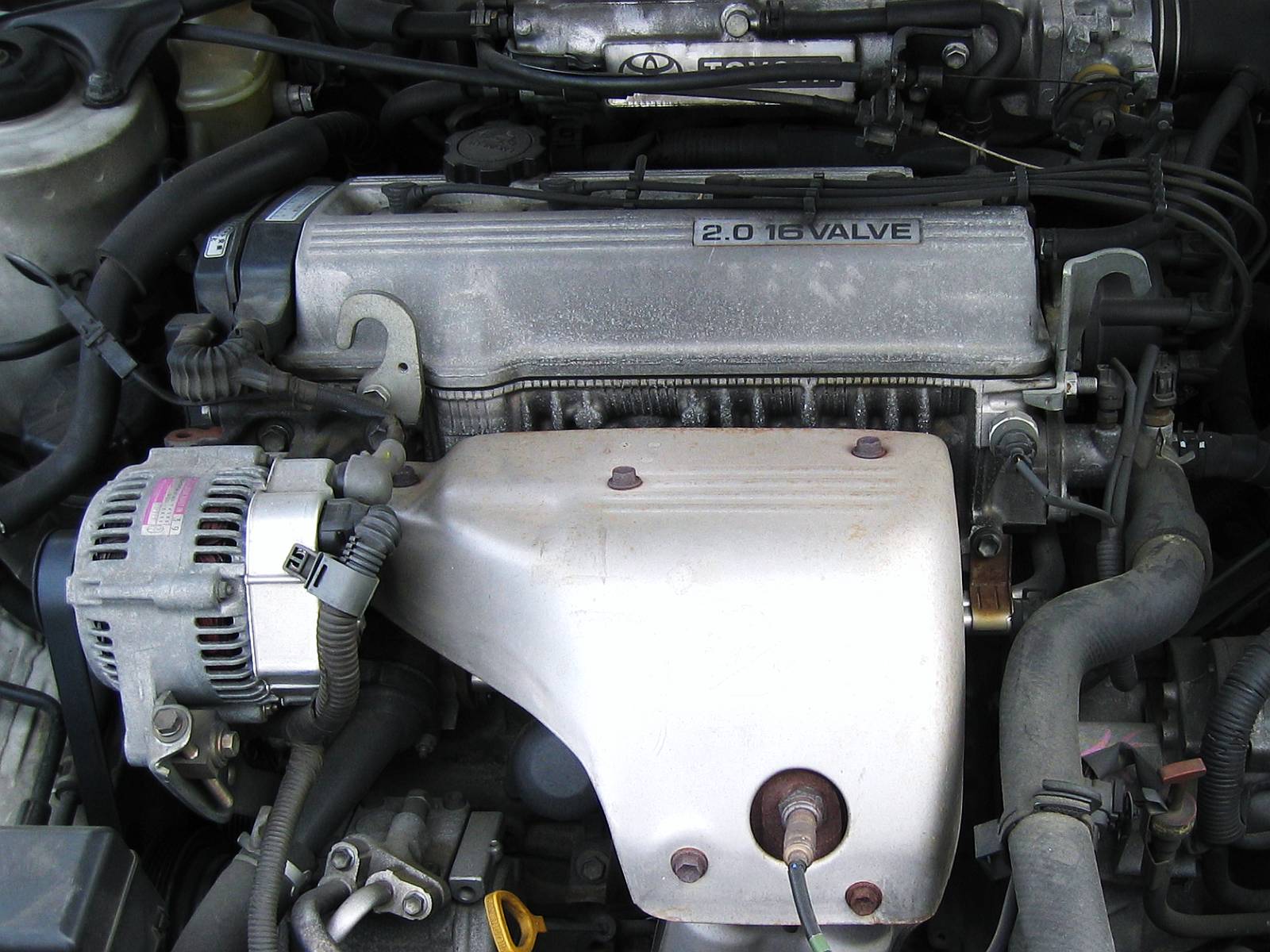
Engine millionaire Toyota 3S-FE
- Diesel gained a reputation for being reliable and durable engines. And they really have a good margin of safety, despite the fact that their design is quite simple. Unkillable motors are endowed with Mercedes-Benz OM602, BMW M57.
- Gasoline inline "fours" compete in popularity with diesels. However, their design is a little simpler, besides, even in the most severe frosts, gasoline will not freeze. Representatives of this category include Toyota 3S-FE, Mitsubishi 4G63, Honda D-series, Opel 20ne.
- Gasoline in-line "sixes" are distinguished by simplicity of design, power and absence of vibration. Cars with engines in this category are represented quite widely - Toyota 1JZ-GE and 2JZ-GE, BMW M30 and M50.
- V-shaped "eights"- these are large units that cannot boast of an extra-long period of operation. However, all these statements should not be applied to the "Americans". There are not so many models with V-shaped units that can easily cross the half-million threshold, a typical representative is the BMW M60.
What cars have a million-strong engine?
But the list of vehicles with million-strong engines is not so small. Not so far has gone such a time when the world was literally captivated by the desire to equip a car with an indestructible engine. Moreover, certain companies lived with this aspiration until the new millennium. Millions of engines in which cars? The list goes on:
- Mercedes-Benz OM602.
- BMW M57.
- Toyota 3S-FE.
- Mitsubishi 4G63.
- Honda D-series.
- Opel 20ne.
- BMW M60.
- Toyota 1JZ-GE and 2JZ-GE.
- BMW M30.
- BMW M50.
Millions are the most reliable engines of our time
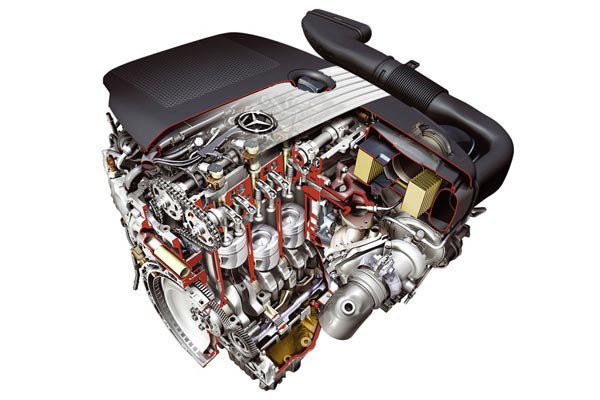
Diesel engine Mercedes OM651
Are "millionaires" irrevocably forgotten? No, even though today "disposable" cars have become fashionable. Ride 3-4 years, sold and - to the salon for a new "swallow". What is there to hide? In fact, there are unsuccessful models, but not all of them. People exploit vehicle for 5-7, and sometimes even 10 and more years, and someone buys a car at all "from hand".
The list of modern engines of millionaires is quite wide.
In this respect, millionaires are the most reliable engines of our time. But which one to choose and not miscalculate? Leaders can be distinguished by class. It is worth saying that the more expensive models are not well suited for tough operation, but you shouldn't ignore them either, because there are really decent options.
- Small class represented by domestic and foreign machines. They are practical and not burdened with different electronics and unnecessary functions. The undisputed leader in this category is the K7M from Renault, the VAZ-21116 and Renault K4M are slightly behind it.
- Middle class represented by such names Z18XER, Renault-Nissan MR20DE / M4R, series of motors from Hyundai / Kia / Mitsubishi G4KD / 4B11.
- Junior business class... The models mentioned above are popular here, as well as the more powerful Toyota 2AR-FE, G4KE / 4B12 from Hyundai / Kia / Mitsubishi.
- Senior business class Are cars that cannot be called cheap. Motors differ in complexity and power, but they are not endowed with special endurance. The leaders in this category are Toyota 3.5 series 2GR-FE and 2GR-FSE, Volvo B6304T2, Infiniti VQVQ37VHR. You cannot pass by the diesel Mercedes E class in the back of the W212 and with the OM651 engine.
- Executive class cannot be cheap, because cars are stuffed with the latest innovations to overflowing. It is impossible to name the best among them. For example, the Germans are famous for their special attitude towards diesel engines and try to make them reliable (a vivid example is the Mercedes-Benz engine with a million), while the Koreans and Japanese focus their work primarily on gasoline engines.
Modern engines of one million people continue to be produced by leading manufacturers today. The trends have changed a little, because if earlier the first lines of the ratings were occupied by European and American manufacturers, today they are entering the arena japanese engines millionaires.
Features of operation
The mileage of the motor in any case depends on the characteristics of its operation. For example, in countries with harsh climates, long periods of standing in traffic jams and fast driving wear out parts much faster. And if you choose a Toyota millionaire engine for a taxi, then everything will change in better side... The taxi is almost constantly in motion, and this is much better than sitting in traffic jams for many hours.
Regular maintenance of machine parts can extend the service life by several years or decades. Care includes correct replacement oils, use of high-quality fuel.
The millionaire engine is interesting only hypothetically. After all, if you spend simple mathematical calculations, it will become clear that the car will travel 1 million km in 37-40 years. During this time, it crumbles, although the engine continues to work.
The ten most popular engines of millionaires are in the video on our website!
We bring to your attention 10 of the best Japanese auto companies, you will find out what engines they produce. It is clear that a car is chosen not only by what engine is on it, but still, this factor should not be “discounted”. You will learn the consumer properties of the best Japanese auto engines, such as resource, reliability, efficiency, ease of use, and repair. 10 of the best Japanese engines, read this post.
After reading this article, many will say: "Yes, my 4D56 is the best engine, it has never been repaired, and it consumes only 5 l / 100 km." Therefore, I will immediately make a reservation, everything that is written in this article is based on statistics. And if your engine hasn't broken down yet, then you're lucky. I would like this article to be read by the inhabitants of the western and central regions of the Russian Federation, tk. it will help them make up for the lack of "communication" with Japanese cars.
Toyota
The engines of this company lend themselves well to repair and are very reliable (although, as they say, the engine is not the same). In Toyota engines, quite rarely you can meet such "bells and whistles" as balancing shafts (unlike Mitsubishi, which loves them very much); variable valve timing system (although Toyota began to introduce more and more VVTi system) and other things affecting reliability. Have passenger cars Toyota has a well-organized engine compartment, so servicing such cars is quite simple.
Among the Japanese Toyota engines, you can meet both very reliable and excellent engines, and obviously bad units. The best engines are the in-line 6-cylinder JZ and 1G series. Repairing the A-series engines (apart from the 4A-GE, which has 5 valves per cylinder) is not difficult at all. Repairing other Toyota engines will not give you much trouble. Toyota's bad engines include only 2C-T, 2L-T (E) diesels, and VZ gasoline series. In the latter, the support necks of the crankshaft wear out very rapidly.
The engines of this company are the most reliable and undemanding (I foresee that many will disagree with me), but see for yourself:
1) Only Nissan produces engines with gear and chain drives of the timing mechanism, which, as you can imagine, are better than rubber timing belts.
2) When the engine overheats in Nissan diesel engines, warpage or cracking of the cylinder head occurs quite occasionally.
3) Many Nissan gasoline engines allow you to drive for quite a long time on 76th gasoline, but you should not abuse it.
I can give you a few more examples of why Japanese Nissan engines are not inferior in quality to other best ones. Japanese models... So the VQ engines, which are on the Cedric, Maxima / Cefiro and many other models, have been considered the best in the world among their own "classmates" for about 7 years.
The TD series diesel engines installed on the Safari / Patrol, Terrano / Pasfinder, Caravan / Urvan models were originally developed for boats. You probably don't understand, but marine engines have always been very reliable, unlike cars. On engines of the TD series there is a gear drive of the gas distribution mechanism. It is necessary to see that the timing gear drive can often be found on the Toyota 3B diesel engine. In the main, there are no problems with this engine, but if there are, then only in the fuel system.
The only drawbacks of Nissan engines are the great difficulty in maintenance and repair, in comparison with Toyota engines. This is due to the fact that under the hood of Nissan cars everything is very tightly packed.
I note that the best and most reliable Nissan engines are SR18 / 20, RB20 / 25/26, GA13 / 15/16, TD23 / 25/27/42.
Basically, Nissan had no problem engines, except for the CA18 / 20 (due to the dual-circuit ignition system) and VG20 / 30 (quick wear of the crankshaft bearing journals).
Mitsubishi
Perhaps the most problematic and difficult to repair are Japanese engines. The designers of Mitsubishi engines, apparently, did not try to find ordinary and reliable solutions. The introduction of plastic carburetors, balancing shafts, specific fuel injection systems, V-shaped arrangement of cylinders, of course, does not increase the maintainability and reliability of engines. For example, many people do not understand how the in-line four-cylinder engines on the Galant model manage to work very softly, but everything is simple here, this is achieved by an "artificial" shackle, thanks to the use of balancing shafts. When there are no problems with the engine, the shafts work fine, everything is fine, but as the drive to the shafts breaks (which often happens on supported units), the engine, which was not initially designed to work without them, over time can get into a very serious repair. Particularly problematic are the turbocharged 4D56 and 4D55 diesels, and their cylinder heads often explode because the material they are made of cannot withstand the cold temperatures of our formidable Russian winters.
The reliability of the heads is very much influenced by low temperatures and, specifically, for this reason, due to high temperature stresses, cracks appear in the heads. The higher the temperature difference on both sides of the wall, the higher the temperature stresses. Now imagine - on the other side of the window minus 20, you are in a hurry to work, start your own engine, due to lack of time you decide not to warm it up to operating temperature (by the way, many people do this because they have to wait a very long time) and start traffic. From the side of the combustion chamber, a saturated heating of the head occurs, while the temperature of the cooling water and the entire head is even lower than the operating temperature. In this situation, the temperature stresses are very high, in addition, there are mechanical stresses from the gas pressure. In any case, for one or a couple of times, cracks will not appear immediately. But evenly, microcracks will begin to appear, which can then grow into such that gases will break through into the coolant through them. It is worth seeing that even a warmed-up engine can have the highest temperature stresses if the engine works for a long time under the highest load, and even with full fuel supply.
But on naturally aspirated diesel engines it is difficult to find cracks in the heads, since they usually do not exist there, and all this is due to lower temperature stresses, because less fuel is burned, respectively, the temperature of the gases in the cylinder is lower. Pain in the head of auto mechanics - EFI - diesel 4M40, to be more precise, it is a diesel with an electronically controlled high-pressure fuel pump, it can often be found on the Pajero model.
Let's put it this way, Japanese Mitsubishi engines are designed for very timely and qualified service. And if you decide to buy a Mitsubishi car for yourself, then take it better with a "more ordinary" engine, for example, with 4G15, found on the Lancer model.
This carmaker produces very high quality engines, with the least amount of flaws. If you operate the Honda engine normally (in other words, you will create maintenance on time, and will not fill it with bad oil and gasoline), then it will not deliver you nasty surprises. But Honda motors also have their own characteristics, which cannot be ignored:
1) Many (though not all!) Engines of this company have the highest degree of boost, therefore it often happens when some Honda Integra is brought from the Land of the Rising Sun (its reddish zone on the tachometer starts at 8000 rpm) and its engine is already in need of a complete refurbishment, as it has already worked out its own resource.
2) During repairs, huge difficulties often arise due to such common Honda "bells and whistles" as: two electrically controlled carburetors for one engine, VTEC, etc. Honda engines even crankshaft spins in the reverse direction, unlike other Japanese engines.
3) These engines certainly need high quality oil and fuel, and this also applies to highly accelerated engines.
But most of the problems, as we have already said, come from the "wound" and forced Honda engines, if your car has a "measured" engine (for example, F23A or C35A), then you have nothing to fear.
Mazda
Engines Japanese company Mazda are not the most reliable, and not the most problematic. Mazda is not very fond of experimenting with engines (not counting rotary units). Due to the fact that there are no different innovations in Mazda engines, this has a positive effect on their maintainability and reliability. According to these indicators, they are only slightly inferior to Toyota engines.
Subaru
Many Subaru engines have a boxer assembly, which provides the highest stiffness and strength of the cylinder block. It is worth seeing that Subaru was quite difficult to repair. Old engines, the EA82 series, which were produced until 1989, have always been famous for their own reliability. Since 1989 and up to the present time, new engines of the EJ series (EJ15, EJ18, EJ20, EJ25, EJ30) have been installed on Subaru cars. This is not to say that they are very reliable, in general, quite good. The only difference between them is a moderate degree of forcing, specific fuel injection systems, also the absence of variable valve timing, etc. It is worth seeing that diesel engines are not installed on Subaru and Honda cars. Subaru engines are demanding on the quality of fuel and oil, therefore, in terms of quality, they are approximately on a par with Toyota engines.
Due to the fact that Suzuki engines do not give their own owner any special illusions, it cannot be said badly about them. True, I cannot say anything about small motors with a displacement of 660 cm3 (by the way, Suzuki produces many cars with such engines). The popular Escudo and Vitara models are equipped with in-line 4-cylinder G16A, a working volume of 1.6 liters. l. and H25A with a volume of 2.5 liters. more capricious than the 4-cylinder G16A.
Daihatsu
It is worth seeing that there are very few of these cars, respectively, there is not much information on them either. In them, I did not see any corresponding flaws. It so happened that the designers of Daihatsu are not carried away by various "bells and whistles" such as variable valve timing.
This Japanese carmaker has long ceased to produce its own models. passenger cars... At the moment, Isuzu is known for its SUVs and trucks, which are often equipped with diesel engines. It must be said that Japanese Isuzu diesel engines are always famous for their unpretentiousness and reliability (although the 4JX1 diesel, which is installed on the Bighorn and Trooper models, is still less reliable than the Nissan TD27). If we talk about Isuzu gasoline engines, then I have not heard anything disgusting about them, especially since they are relatively ordinary in design.
Specifications for Acura vehicles generally do not differ from those of Honda models. Even the model names are the same. Most of the models are made specifically in North America (TL and CL series), and individual models- RL and NSX are imported from the Land of the Rising Sun due to low demand. The release of only American models of Acura in 1999 amounted to 101.3 thousand units. It is worth seeing that the best Japanese Acura engine is the i-DTEC (turbocharged engine), which was launched in 2009. Thanks to i-DTEC, the amount of harmful exhaust gases, has great power, consumes less fuel, is environmentally friendly, does not create a lot of noise, and provides good driving properties. It is a pleasure to drive a car with i-DTEC engine.
And in conclusion, I would like to add that in our 10-ke, the best and most reliable Japanese engine is the one that is correctly exploited. I hope this article will help you resolve many of the controversies when choosing a car.


